All about strawberry and strawberry seedlings
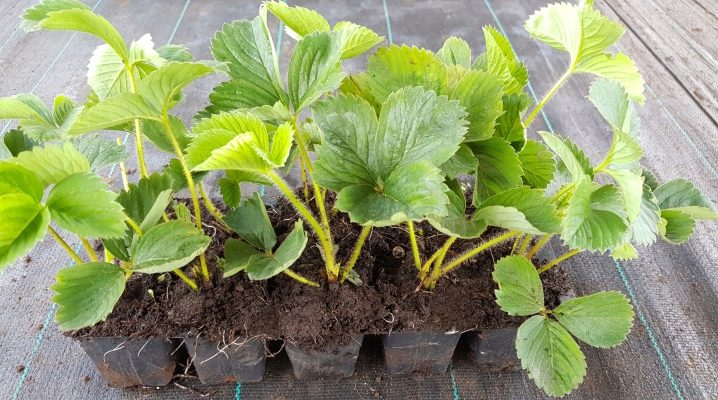
At the moment, in specialized stores and on the Internet, you can easily find more than a wide range of planting material. Thanks to this variety, it has become fashionable to grow garden strawberries, including from seeds. Propagation of strawberries by seedlings is a rather interesting process. It should be noted that this approach to the cultivation of berries allows you to preserve all the properties of the variety. At the same time, it is important to have certain knowledge and skills for growing seedlings and competently caring for them until they are transferred to the ground.


What it is?
Most types of strawberries are propagated vegetatively. Most often, modern gardeners make a choice in favor of the cultivation of berries with a mustache, less often they resort to the method of dividing the bush. But, unfortunately, sooner or later these options almost completely lose their effectiveness. The situation looks similar due to the fact that young animals inevitably accumulate diseases during such reproduction.
And the only rational way out today is to purchase high-quality planting material. These can be both seeds and the strawberry seedlings themselves. However, it should be borne in mind that purchased seedlings do not always fully justify expectations. That is why experienced gardeners prefer to grow seedlings on their own from:
-
seeds;
-
mustache;
-
sockets.
In practice, the easiest way is to root the mustache.
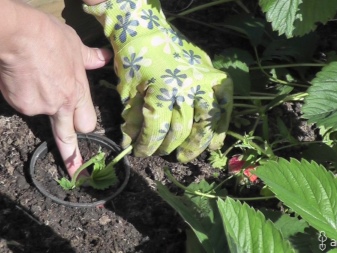
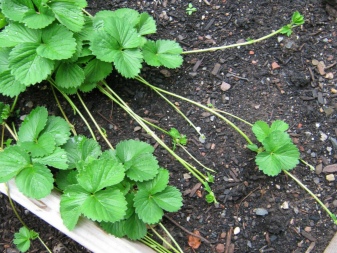
The procedure consists in the fact that it is necessary to cut off the strongest shoots and place them in peat tablets. The latter should be in a pan with water and covered with transparent material. The result is a small greenhouse with an appropriate microclimate.
Applying the socket method is a very laborious and time consuming process. In this case, the main advantage will be the development of a young plant in its natural environment. This, in turn, contributes to the development of strong immunity while maintaining all varietal qualities. Growing seedlings from seeds (purchased or collected independently) can also require some effort and time at the initial stage.
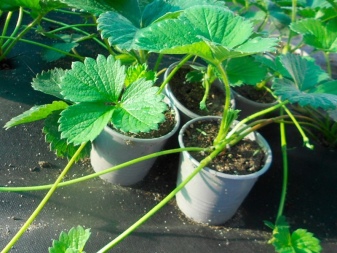
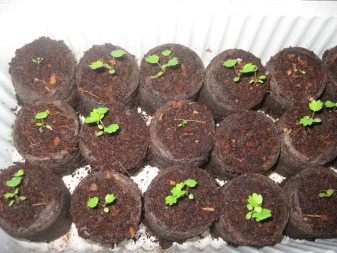
Planting strawberries for seedlings
It must be remembered that the quality of the future planting material depends on how correctly all agrotechnical measures are implemented. That is why for growing seedlings of remontant strawberries Victoria and any other varieties when propagating by seeds, you should strictly adhere to the basic recommendations. Otherwise, it is unlikely that it will be possible to get good strong seedlings with a guarantee of maintaining varietal characteristics.
In principle, all procedures can be performed at home, subject to the timing when it is necessary to sow, and proper care for future seedlings.

Timing
One of the main tasks of the gardener is the timely implementation of all stages. For example, planting in the ground can be carried out in the fall. Such not only autumn, but also spring and summer works have their own characteristics. If we are talking about seeds for seedlings, then experienced gardeners and gardeners believe that it is better to sow crops in the spring, namely: from February to March. In this case, the determining factor will be the climatic conditions of the region, as well as the peculiarities of the weather at a particular moment in time.
When choosing the time to plant, take into account the onset of sustained heat, as well as the increase in sun activity. So, for example, in the southern regions, they begin to sow at the beginning of February. For central Russia, the optimal time is the beginning of the first spring month. If we are talking about Siberia, the Urals and the Leningrad region, then the crops fall on the end of March - the beginning of April. By the way, experienced gardeners are guided by the lunar calendar when determining the timing of agrotechnical work.
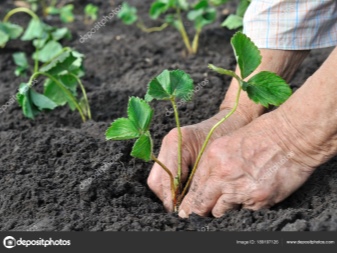

Priming
For young stock of garden strawberries, the best option is loose, as light as possible and, of course, nutritious soil (preference is given to slightly acidic or neutral soil). And also the list of necessary conditions includes good water permeability and ventilation. Now you can buy a ready-made substrate for seedlings, and often on sale there is a special soil specifically for strawberries.
Naturally, the most suitable soil composition can be prepared independently according to several recipes. One of the popular options provides for the presence of humus, sand and peat in a ratio of 1: 1: 3. An alternative would be a substrate of 2 parts of sod land, 1 part of sand and a similar volume of peat. And the following mixture is also common:
-
sod land - 2 parts;
-
sand and peat - 1 part each;
-
compost or humus - ½ part;
-
wood ash - ½ glass for every 5 liters of soil.
By the way, strawberry seedlings develop well in the soil for violets and room begonias.
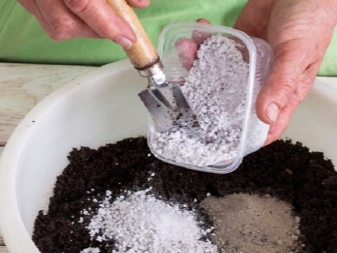
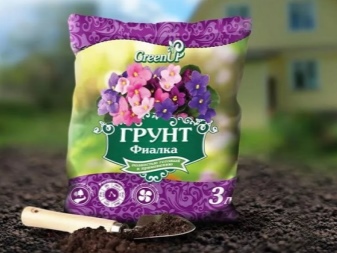
Capacity
You can sow strawberries both in a common container and using the cassette method. By the way, ordinary cups can become an alternative to special cassettes. In the first case, for example, food containers are successfully used, the optimal height of which is from 7 to 10 cm.
In addition to cassettes, peat tablets and pots are also widely used. As practice shows, when choosing large enough containers from the list of necessary agrotechnical measures, it will be possible to exclude a pick. Do not take off the accounts and homemade containers from milk containers, egg boxes (cages) and other scrap materials.
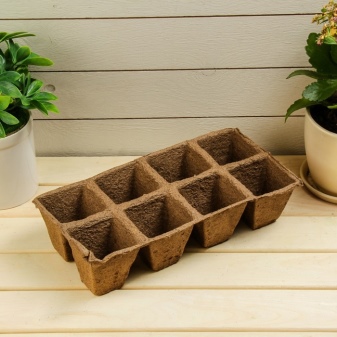
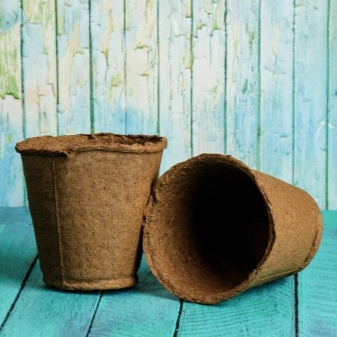
Preparation
It is important to take into account that the seeds of garden strawberries are classified as tightly similar. Mistakes made during landing can lead to the fact that they, in general, will not hatch. Avoiding such situations will allow competent preparation of planting material for growing strawberries. Naturally, when performing all the work provided for by the technology, disinfection of the instrument will be mandatory.
One of the key points in the preparatory phase is preliminary stratification. It is about keeping the material in conditions of low temperature and humidity for a month. The algorithm of actions in this case is as follows.
-
Place a cotton pad in a small container and moisten it.
-
Transfer the seeds carefully to the disc.
-
Cover the material with a second, pre-moistened cotton pad.
-
Place the container in the bag, while leaving enough air.
-
Transfer the package to a room where the temperature ranges from 1 to 4 degrees Celsius. The best option is a regular refrigerator.
-
Open the bag every week to ensure air access.
Experts and experienced gardeners recommend to subject the seeds to additional processing after stratification. This means that immediately before transferring the material to the ground, it should be placed in a solution that stimulates growth and germination.
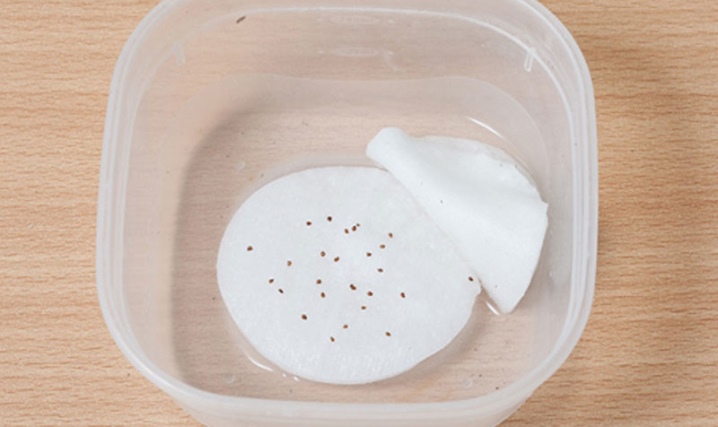
Sowing methods
After waiting for the optimal time, having prepared the seeds, containers and soil mixture according to all the rules, you can proceed directly to planting them. The technology in this case provides for the implementation of simple actions.
-
If necessary, make holes in the container and lay a drainage layer.
-
Fill the container with soil, leaving about 2-3 cm to the edge.
-
Irrigate the soil with a spray bottle.
-
Sow seeds at 2 cm intervals using a regular toothpick or small tweezers. It is important to remember that due to the size of the seeds, only shallow sowing is allowed.
-
Water the soil.
-
Cover the container (s) with foil or glass.
-
Sign future seedlings.
-
Place containers in a warm and well-lit place.
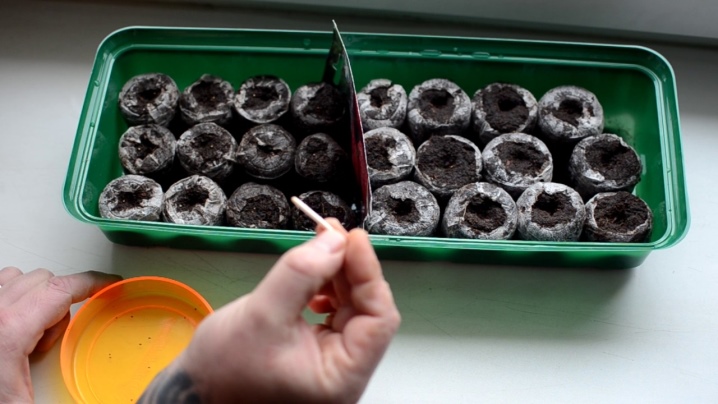
In addition to the described classical method, many gardeners also successfully use the following methods of planting seeds, which guarantee the opportunity to grow high-quality seedlings.
-
In tablets made of pressed peat and high-quality non-woven material. As already noted, the choice of bulky containers will allow you to do without seating.
-
In rows - an option that is largely similar to the standard one. At a distance of 2-3 cm from each other, it is necessary to make rows with a depression of no more than 5 mm. After that, seeds are placed in them with a step of 1.5-2 cm, and slightly pressed into the soil.
-
On the snow. The minimum size of the planting material often does not allow it to be evenly distributed over the soil. However, on a white surface, the seeds are very visible. Another plus of this method is that as the snow melts, the seeds are drawn into the soil to the required depth.
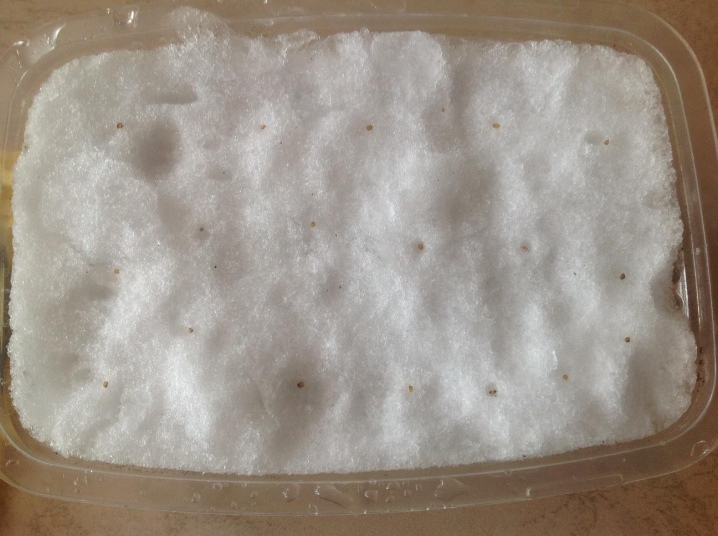
Follow-up care
It is undeniable that the seedlings must be properly looked after, creating favorable conditions for the active growth and development of future strawberry seedlings. And we are talking about all stages: both before the appearance of the first seedlings of seeds, and after that. At the same time, it is important to take into account all the needs of this rather capricious crop, including the need for fertilization with urea and the introduction of mineral nutrition. Otherwise, you should not count on a high-quality berry and, therefore, a rich harvest.
Analyzing the basic rules for caring for seedlings at different stages, it is necessary to highlight a number of key points.
-
Until the emergence of sprouts, it is required to remove the covering material from the mini-greenhouse for 15-20 minutes every day, carefully removing condensation from it. After the first shoots appear, the cover (film, glass) is removed. It is important to do this only gradually to avoid stress on young plants.
-
After planting, the optimum temperature for germinating seeds will be + 23 ... 25 degrees. In the future, this indicator must be kept at around +20 degrees. This lowering of the temperature prevents the seedlings from pulling out.
-
Seedlings require good lighting at all stages.
-
Watering should be done in moderation to avoid fungal infections, including the extremely dangerous black leg. However, drying out the soil will also be detrimental to future plants.
-
If foci of mold are found, they are carefully removed, and the soil is spilled with a fungicide solution.
-
Often, after the emergence of seedlings on the surface, some of them turn out to be excessively elongated. In such situations, it is recommended to add soil around the long-stemmed shoots.
-
After watering, it will be useful to loosen the soil with the utmost care. For this, it is convenient to use the same toothpick. And also experienced gardeners successfully use "Kornevin" and other similar means, act strictly in accordance with the manufacturer's instructions.

It is worth considering that the first seeds hatch within 2 weeks after sowing. However, the pace, as well as the amicability of this process, is directly determined by the correctness of care.
Picking
This procedure is carried out after the emergence of 3 true leaves at the seedlings. It is also important to have individual containers with a volume of at least 200 ml, which can be:
-
peat pots;
-
cups;
-
cassette.
Drainage holes must be present in new seedling containers. The pick itself is a fairly simple process that includes several steps.
-
The soil with sprouted future seedlings is moistened, which contributes to its softening, eliminates the likelihood of any difficulties during planting. This must be done several hours before the start of the considered agrotechnical event.
-
New containers are filled with pre-prepared soil, a little short of the edges.
-
They make holes in the middle.
-
Plants are carefully pry together with an earthen lump so as to exclude damage to the formed root system. You can use wooden sticks or spatulas for this, as well as ordinary forks and any other convenient and suitable tool.
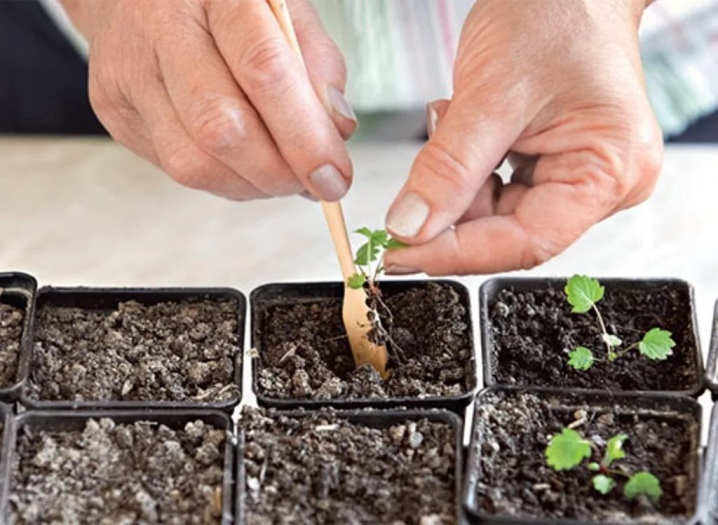
When picking, roots that are too long can be pinched gently. It should be remembered that the so-called heart, which is the growth point, does not need to be deepened during the transplantation process. This minimizes the risk of seedling death.
Possible problems
Unfortunately, sometimes, despite all the efforts of gardeners, strawberry seedlings die. To effectively prevent such troubles, and not be left without valuable planting material, it is necessary to know the root causes of the problems. In this context, it is worth highlighting some important points.
-
Use for sowing of unsuitable composition and quality or non-disinfected soil.
-
Abrupt removal of the covering material of a mini-greenhouse with future and only hatched seedlings. Often, still immature sprouts die due to stress.
-
Due to the low temperature and high humidity, young seedlings develop such a dangerous and incurable disease as black leg. In this case, the stem quickly turns black and becomes much thinner, after which the young plant simply falls.
-
Violation of the key rules of care can provoke the development of a whole list of diseases. In this case, we are talking about sharp temperature fluctuations, as well as drying out or, conversely, overmoistening.
-
Excessively dry air, as well as insufficient watering, can cause seedlings to dry out.
In addition to all of the above, the seedlings may simply stop growing after the pick. And also quite often stretching of the stems with their thinning is observed. This is usually caused by early sowing, lack of light and too high a temperature.
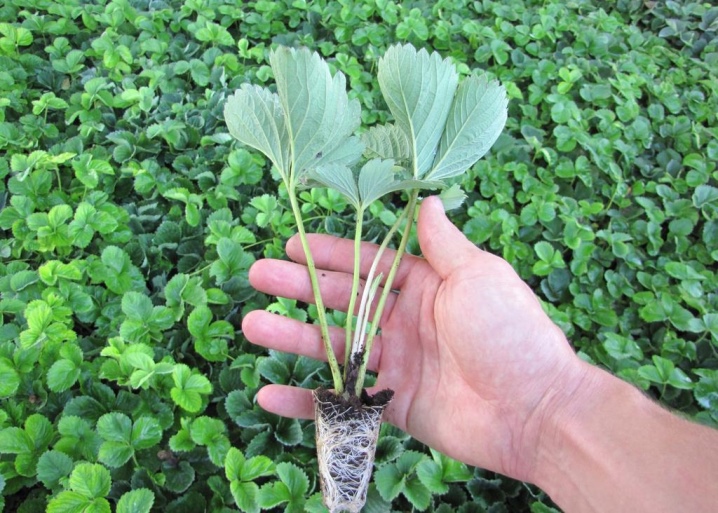
How to choose the right seedlings?
Today, you can buy ready-made seedlings of garden strawberries in specialized stores or nurseries, as well as by ordering through online platforms. At the same time, it is strongly recommended to focus on certain points.
-
Weather conditions in the region. It is better to buy seedlings after warm weather has already established, and the risk of frost return is excluded.
-
Manufacturer. This is most relevant when ordering online, and in situations like this it is important to study as much of the relevant information as possible, including customer reviews of the supplier.
-
Selection of strawberry varieties that are most suitable for the climate of a particular area.
-
Features of the variety, which will be one of the defining selection criteria.
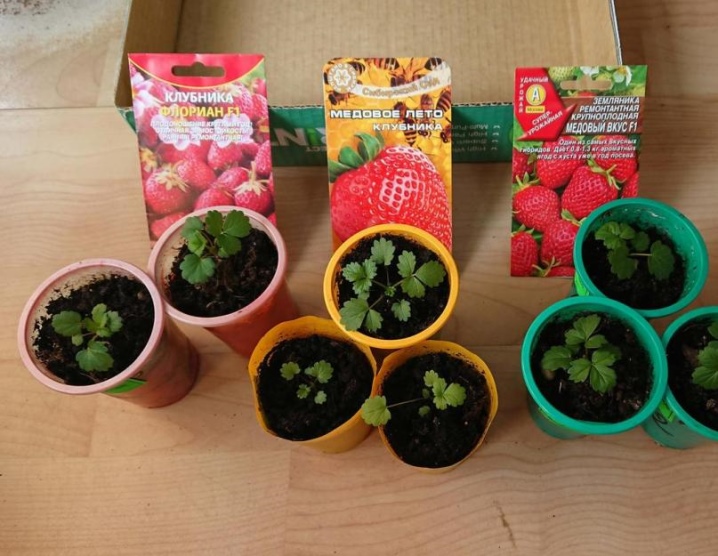
Seedlings with both open and closed root systems are now on sale. The first option allows you to visually assess the condition of the roots. At the same time, signs of high-quality planting material will be:
-
lush rosette with roots from 7 cm long;
-
the diameter of the root collar is at least 6 mm;
-
the roots are not overdried.
After purchasing these seedlings, it is important to prevent drying out. To do this, it will be enough to place the seedlings in a container and cover with a damp cloth. Naturally, you cannot leave it all in the sun.


Seedlings with closed roots are sold in cups (cassettes). It is worth noting that this option has certain advantages over the previous one.
-
Due to the fact that the root system is in the ground, it is prevented from drying out, as well as damage.
-
Such outlets are much more convenient and safer to transport.
-
You can purchase such planting material throughout the season, since there is no need to rush to transfer to open ground.
-
The survival rate of seedlings is significantly higher.
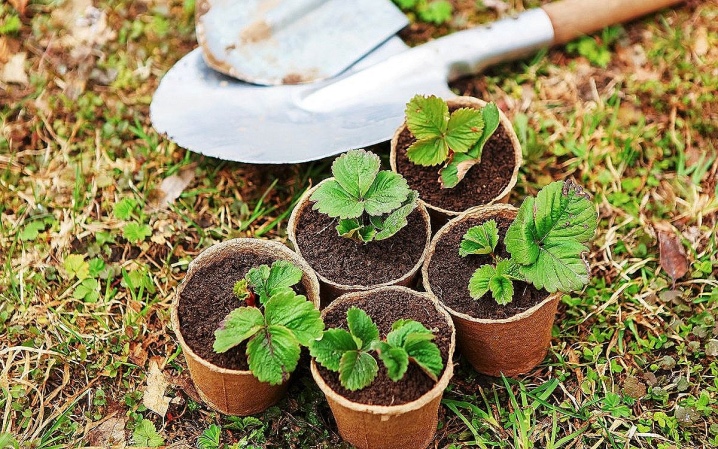
If we talk about the disadvantages of seedlings with closed roots, then the most significant factor will be the relatively high cost. You can check the quality of the material by carefully pulling it out of the glass and examining the roots with an earthen lump. A good sign will be if the latter does not crumble and is entangled in roots.
Regardless of what type of seedlings are purchased, the condition of the outlets will be an important factor. When choosing material for planting, you need to make sure that the leaves are completely healthy and without damage. There should be 2 to 5 young leaves and a growth point of at least 7 mm.
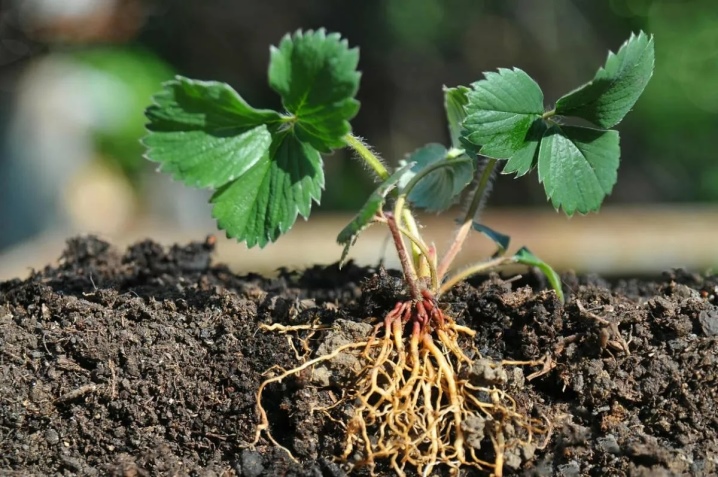









The comment was sent successfully.